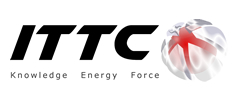Short-Term, Small-Dollar Lending: Policy Problems and Implications
Appendixes
Overview
Short-term, small-dollar loans are consumer loans with reasonably low initial major amounts (frequently significantly less than click to investigate $1,000) with fairly repayment that is short (generally speaking for only a few days or months). Short-term, small-dollar loan items are commonly used to pay for cash-flow shortages which could happen because of unanticipated costs or durations of inadequate earnings. Small-dollar loans may be available in different kinds and also by a lot of different loan providers. Banking institutions and credit unions (depositories) could make small-dollar loans through lending options such as for instance charge cards, credit card payday loans, and bank account overdraft security programs. Small-dollar loans can be given by nonbank loan providers (alternative service that is financial providers), such as for example payday loan providers and car name loan providers.
The degree that debtor situations that are financial be produced worse through the utilization of high priced credit or from restricted usage of credit is commonly debated. Customer teams frequently raise concerns in connection with affordability of small-dollar loans. Borrowers spend rates and costs for small-dollar loans that could be considered high priced. Borrowers might also fall under financial obligation traps, circumstances where borrowers repeatedly roll over loans that are existing new loans and afterwards incur more charges in place of completely paying down the loans. Even though the weaknesses related to financial obligation traps are far more often talked about into the context of nonbank services and products such as for example pay day loans, borrowers may nevertheless battle to repay balances that are outstanding face additional fees on loans such as for instance bank cards which can be given by depositories. Conversely, the financing industry usually raises issues in connection with reduced option of small-dollar credit. Regulations geared towards reducing charges for borrowers may end up in greater charges for loan providers, perhaps restricting or credit that is reducing for economically troubled people.
This report provides a synopsis of this small-dollar customer financing areas and associated policy problems. Explanations of fundamental short-term, small-dollar cash loan items are presented. Current federal and state regulatory approaches to customer security in small-dollar lending areas may also be explained, including a directory of a proposition because of the customer Financial Protection Bureau (CFPB) to make usage of requirements that are federal would behave as a flooring for state laws. The CFPB estimates that its proposition would bring about a product decrease in small-dollar loans provided by AFS providers. The CFPB proposition happens to be at the mercy of debate. H.R. 10, the Financial PREFERENCE Act of 2017, that has been passed away because of the House of Representatives on June 8, 2017, would stop the CFPB from exercising any rulemaking, enforcement, or just about any other authority with respect to pay day loans, car name loans, or any other comparable loans. After speaking about the insurance policy implications associated with the CFPB proposition, this report examines basic rates dynamics into the small-dollar credit market. Their education of market competition, which can be revealed by analyzing selling price characteristics, may possibly provide insights affordability that is concerning supply alternatives for users of particular small-dollar loan services and products.
The small-dollar financing market exhibits both competitive and noncompetitive market prices characteristics. Some industry monetary data metrics are perhaps in keeping with competitive market rates. Factors such as for instance regulatory obstacles and variations in item features, however, restrict the ability of banking institutions and credit unions to take on AFS providers within the small-dollar market. Borrowers may choose some loan product features provided by nonbanks, including the way the items are delivered, compared to items provided by conventional finance institutions. Offered the presence of both competitive and noncompetitive market characteristics, determining if the rates borrowers pay money for small-dollar loan items are “too much” is challenging. The Appendix covers just how to conduct price that is meaningful making use of the apr (APR) along with some general details about loan prices.
Introduction
Short-term, small-dollar loans are consumer loans with reasonably low initial major amounts (frequently not as much as $1,000) with brief payment durations (generally speaking for a small amount of days or months). 1 Short-term, small-dollar loan items are commonly used to pay for income shortages which could happen as a result of unanticipated costs or durations of insufficient earnings. Small-dollar loans could be available in different kinds and also by a lot of different loan providers. Federally insured depository institutions (for example., banks and credit unions) will make small-dollar loans via lending options such as for example charge cards, charge card payday loans, and bank checking account overdraft security programs. Nonbank lenders, such as for example alternate service that is financialAFS) providers ( ag e.g., payday loan providers, vehicle name loan providers), also provide small-dollar loans. 2
